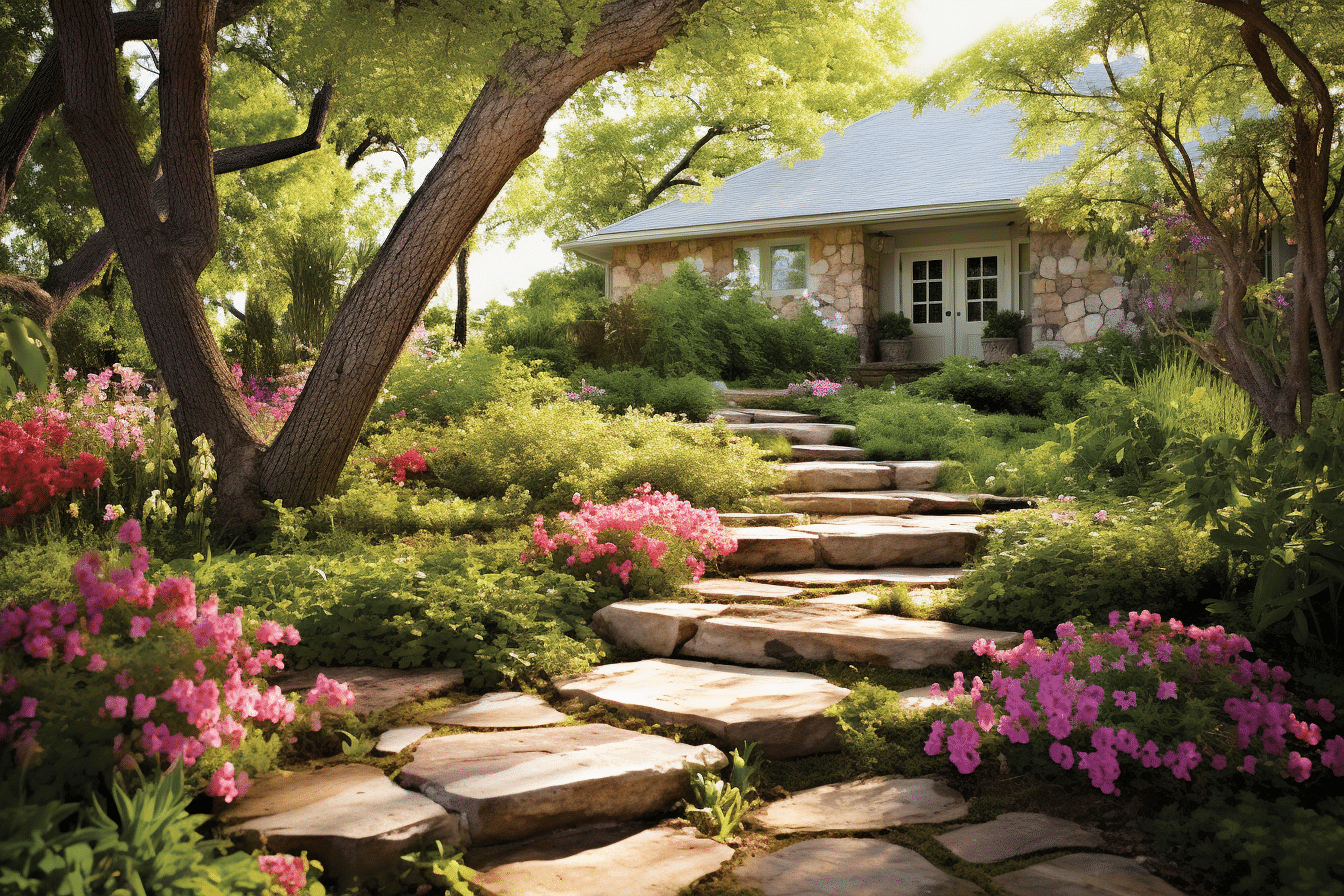
Landscaping Tips and Tricks: How to Transform Your Outdoor Space
Landscaping is an essential aspect of any home’s exterior. It can make or break the overall look of your property. A well-designed and maintained landscape can increase your home’s value and curb appeal. However, landscaping can be daunting, especially if you’re new to it. There are many factors to consider, such as plant selection, soil type, climate, and maintenance requirements.
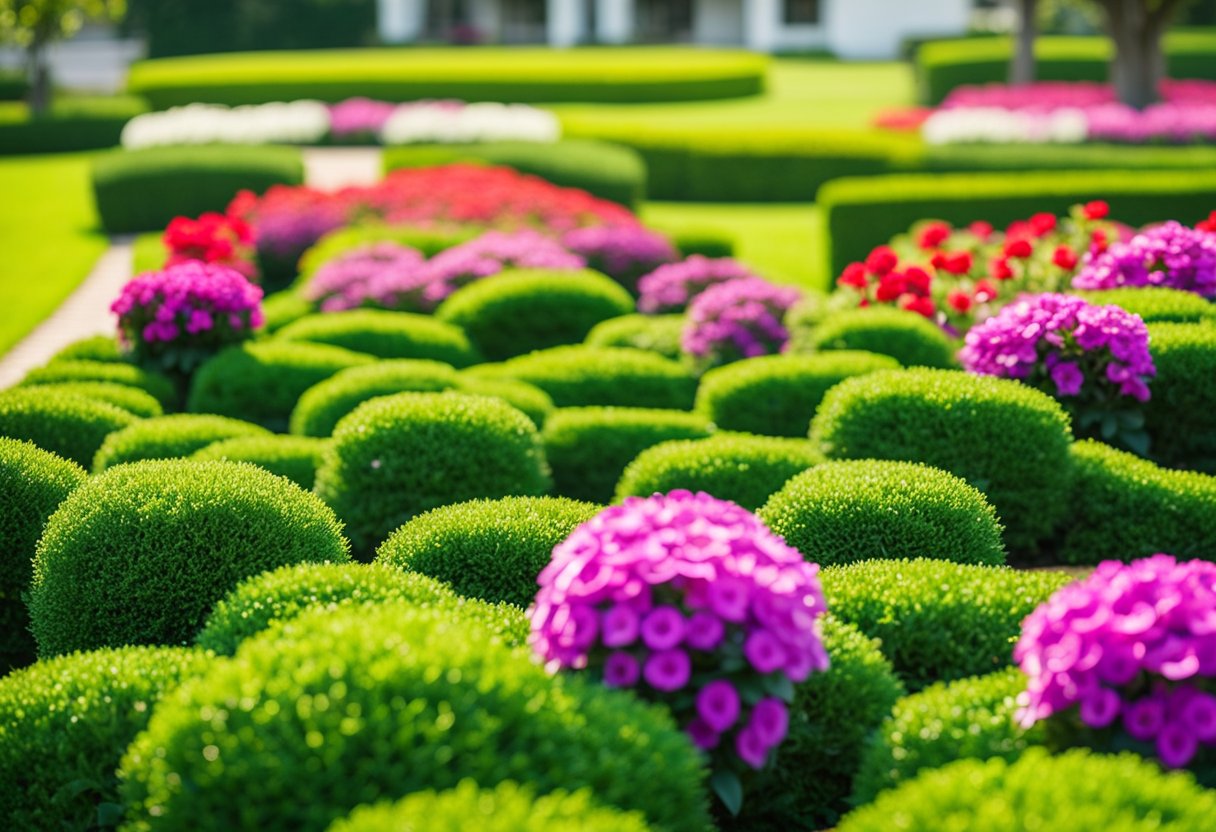
If you’re looking to improve your landscape, you’re in the right place. In this article, we’ll provide you with some landscaping tips and tricks to help you create a beautiful and functional outdoor space. From plant selection to design ideas, we’ll cover everything you need to know to transform your yard into a stunning oasis. Whether you’re a seasoned gardener or a beginner, these tips will help you achieve the landscape of your dreams.
So, we’ve got you covered whether you want to create a cozy outdoor living space, add some color to your garden, or increase your home’s curb appeal. With the right tools, techniques, and creativity, you can turn your yard into a beautiful and functional space you’ll love spending time in. So, let’s get started on your landscaping journey!
Understanding Landscaping
When it comes to landscaping, it’s important to clearly understand what it entails. Landscaping involves designing and creating a functional and aesthetically pleasing outdoor space. This can include everything from planting flowers and trees to building retaining walls and installing outdoor lighting.
To get started with landscaping, it’s important to do your research. Look for inspiration online or in magazines, and consider hiring a professional landscape designer if you’re unsure of where to begin. A professional can help you create a plan that fits your budget and your specific needs.
When designing your landscape, it’s important to consider factors such as the climate, soil type, and amount of sunlight your yard receives. This will help you choose plants and other features that will thrive in your particular environment. To ensure your plants thrive, it’s important to understand the type of soil in your garden. The United States Department of Agriculture (USDA) provides a comprehensive soil survey that you can use to identify your specific soil type.
Another important aspect of landscaping is maintenance. Make sure to choose plants and features that are easy to care for, and consider hiring a professional to help with tasks such as pruning and fertilizing.
Landscaping can be a fun and rewarding project that adds value to your home and enhances your outdoor living space. With careful planning and research, you can create a landscape you’ll enjoy for years to come.
Planning Your Landscape
When it comes to landscaping, planning is crucial to achieving a beautiful and functional outdoor space. This section will discuss the key factors to consider when planning your landscape.
Determining Your Needs and Wants
Before you start planning your landscape, it’s essential to determine your needs and wants. Make a list of what you want to achieve with your yard, such as having a play space for your kids, growing vegetables, or creating a patio area for entertaining guests. Consider your budget and how much time and money you’re willing to invest in your landscaping project.
Research and Experiment
Once you’ve determined your needs and wants, it’s time to research and experiment with different landscaping ideas. Visit your local library or browse for landscaping books, magazines, and TV shows online. Experiment with different landscape styles, such as formal, informal, modern, or traditional, to find what works best for your space.
Landscape Styles
Landscaping styles can be divided into unity, form, and line. Unity refers to how well all the elements in your landscape work together to create a cohesive look. Form refers to the shape and structure of plants, while line refers to the way plants and hardscaping elements are arranged.
Placement and Space Utilization
When planning your landscape, consider how to use the space and make the most of it. Think about where to place focal points, such as a water feature or a statue, to create visual interest. Plan paths and walkways to create flow and make it easy to move around your yard. Consider how to use hardscaping elements, such as a patio or a retaining wall, to maximize your outdoor space.
Soil Testing
Before you start planting, it’s essential to test your soil to determine its nutrient levels. Soil testing can help you determine what type of fertilizer and soil amendments you need to add to your soil to promote healthy plant growth. Nitrogen is a crucial nutrient for plants, but too much can harm your plants, so it’s important to get the right balance.
By following these tips and tricks, you can plan a beautiful and functional landscape that meets your needs and fits your budget.
Choosing Your Plants
When it comes to landscaping, choosing the right plants is crucial for a beautiful and thriving garden. In this section, we will go over some important factors to consider when selecting your plants.
Understanding Plant Types
Before choosing your plants, it’s important to understand the different types available. Some common plant types include annuals, perennials, shrubs, and trees. Annuals are plants that complete their life cycle in one growing season and must be replanted yearly. Conversely, perennials come back year after year and can provide a stable foundation for your garden. Shrubs and trees add height and structure to your garden while also providing shade and privacy.
Seasonal Plants
When selecting plants, it’s important to consider their seasonal nature. Some plants bloom in the spring, while others bloom in the summer or fall. By selecting plants that bloom at different times throughout the year, you can ensure that your garden looks beautiful and colorful all year round.
Drought-Tolerant Plants
Another important factor to consider when selecting your plants is their drought tolerance. Drought may be common depending on where you live, so it’s important to select plants that can survive with minimal watering. Drought-tolerant plants can also be a great option for those who want to conserve water or reduce their water bill.
When selecting your plants, consider factors such as planting, color, texture, form, foliage, and blooms. You can also mix and match different types of plants to create a visually interesting and dynamic garden. By taking the time to carefully select your plants, you can create a beautiful and thriving garden that you can enjoy for years to come.
Landscaping Techniques
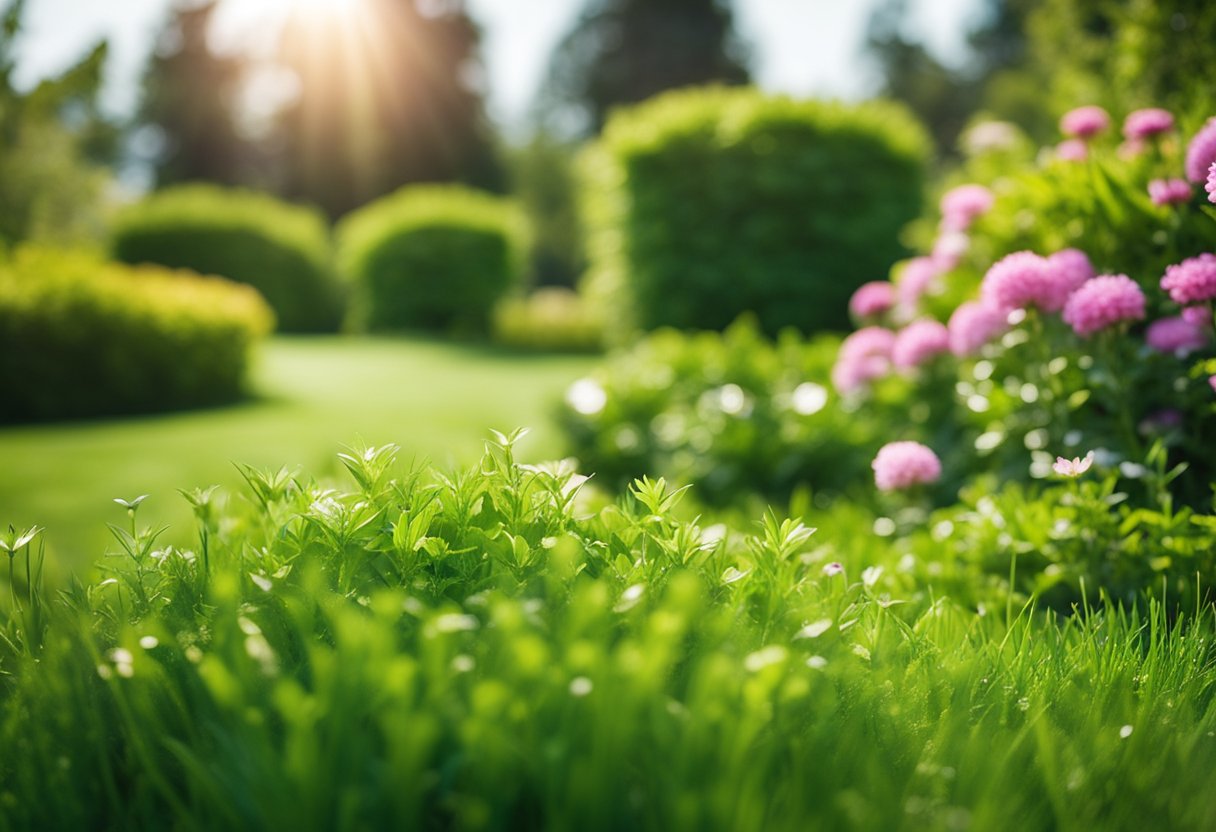
Landscaping is an art that requires skills and creativity. You can transform your outdoor space into a beautiful and functional area with the right techniques. In this section, we will discuss some landscaping techniques that you can use to enhance the beauty of your yard.
Plant-In-A-Pot Technique
The plant-in-a-pot technique is an excellent way to create a beautiful garden without having to worry about digging up your yard. This technique involves planting your plants in pots and arranging them in a beautiful pattern. You can use this technique to create a stunning flower garden or to grow vegetables.
To use this technique, you will need to choose the right pots for your plants. Ensure that the pots are the right size for your plants and have good drainage. You can also use a tarp to create a beautiful backdrop for your pots.
Mulch Spreading
Mulch is an essential part of any garden. It helps to retain moisture in the soil, suppress weeds, and regulate soil temperature. Mulch also adds nutrients to the soil as it decomposes. To spread mulch in your garden, remove any weeds or debris from the soil first.
Next, spread a layer of mulch around your plants, making sure to leave a small gap around the stem. You can use a spade or a rake to spread the mulch evenly. Make sure that the mulch is not too thick, as this can suffocate your plants.
Pruning Techniques
Pruning is an essential part of maintaining healthy plants. It helps to promote growth and remove dead or diseased branches. To prune your plants, you should first identify the branches that need to be pruned.
Next, use a sharp pair of pruning shears to cut the branches at a 45-degree angle. Make sure to cut just above the bud to promote new growth. You should also make sure to sterilize your pruning shears to prevent the spread of disease.
Lawn Edging
Lawn edging is a simple technique that can help define your garden and prevent grass from growing into your flower beds. You can use a spade or an edging tool to edge your lawn.
First, mark out the edge of your lawn with a string or a garden hose. Next, use your spade or edging tool to cut along the edge of the string, creating a clean line. You can then remove any excess grass or debris from the edge of your lawn.
In conclusion, these landscaping techniques can help you to create a beautiful and functional outdoor space. Using the right techniques, you can transform your yard into a stunning garden that you can enjoy for years.
Hardscaping

When it comes to landscaping, hardscaping is an important element that can transform your outdoor space into a beautiful and functional area. Hardscaping refers to the non-living elements of your landscape, such as walls, patios, walkways, and water features. Here are some tips and ideas for incorporating hardscaping into your landscaping design.
Creating Walls and Retaining Walls
Walls and retaining walls can be a great way to structure and define your yard. Whether you want to create a raised garden bed or a seating area, a wall can help define the space and add visual interest. Consider using natural stone or boulder walls for a rustic or more modern look with concrete or brick.
Adding a Fire Pit
A fire pit is a great way to add warmth and ambiance to your outdoor space. Whether you want to roast marshmallows with the kids or enjoy a glass of wine with friends, a fire pit can be a great addition to your yard. Consider using gravel or stone for the base of your fire pit, and surround it with seating for a cozy gathering spot.
Water Features
Water features can add a tranquil and relaxing element to your outdoor space. Whether you want a small fountain or a large pond, a water feature can be a great addition to your yard. Consider using natural stone or concrete for the base of your water feature, and add plants and lighting for a beautiful and serene effect.
Walkways and Paths
Walkways and paths can help guide visitors through your yard and add structure to your landscaping design. Consider using natural stone or concrete pavers for a durable and stylish look. Add lighting along the path for a beautiful effect at night.
Patios and Planters
Patios and planters can be a great way to create a functional and beautiful outdoor living space. Consider using natural stone or concrete for your patio, and add planters or pots for a pop of color and texture. Choose plants that are suitable for your climate and sun exposure, and add lighting for a beautiful effect at night.
Incorporating hardscaping into your landscaping design can help transform your outdoor space into a beautiful and functional area. Whether you want to add a fire pit or a water feature, there are many options to choose from. Consider using natural materials like stone and gravel for a beautiful and timeless look.
Lawn Care and Maintenance
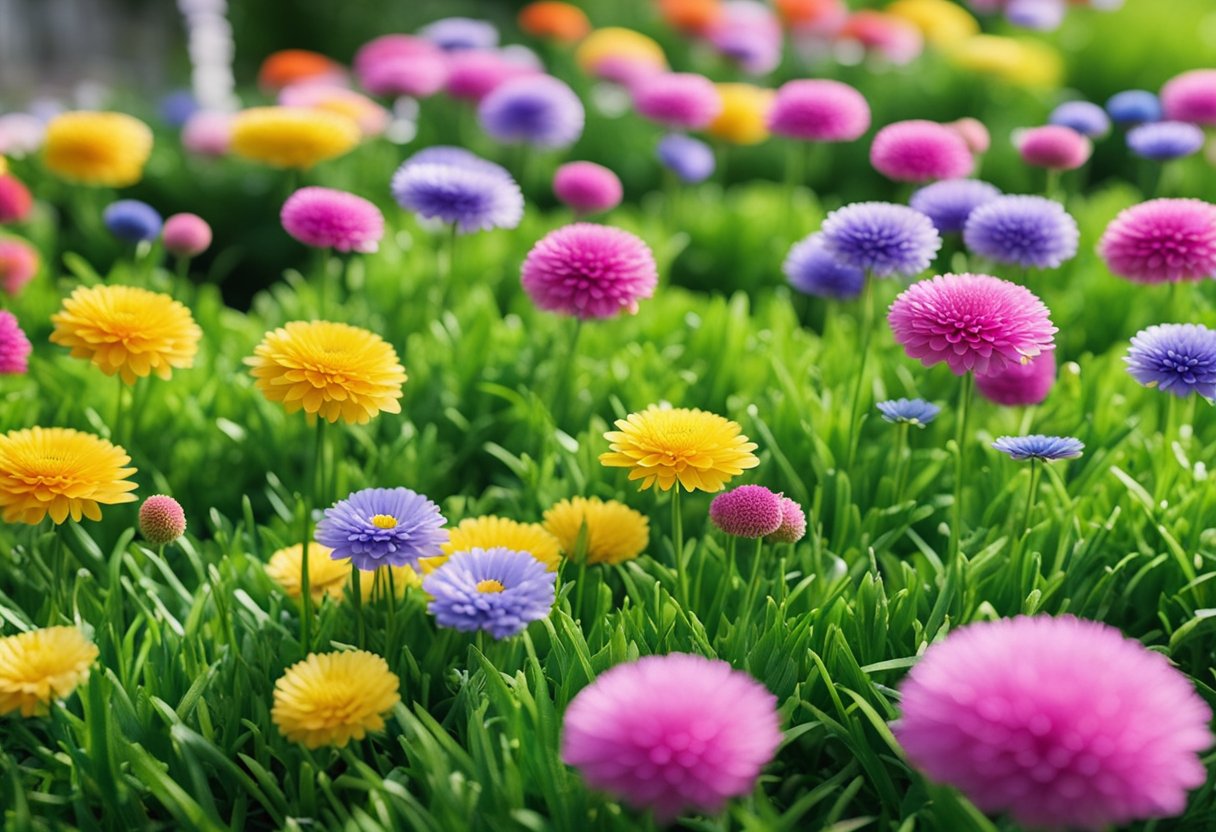
Proper lawn care and maintenance are essential for keeping your lawn healthy and looking great. This section will cover four important sub-sections: Aeration and Drainage, Weed Control, Fertilizing and Mulching, and Plant and Lawn Care.
Aeration and Drainage
Aeration is the process of creating small holes in your lawn to allow for better air, water, and nutrient flow to the roots. This helps to reduce soil compaction and promotes healthy root growth. Aeration should be done at least once a year, preferably in the spring or fall.
Drainage is also an important factor in lawn care. Poor drainage can lead to waterlogged soil, which can cause root rot and other issues. To improve drainage, you can use a variety of methods, such as adding sand or gravel to the soil, creating a rain garden, or installing a French drain.
Weed Control
Weeds can quickly take over a lawn if left unchecked. To prevent this, it is important to implement a weed control program. This can include using herbicides, pulling weeds by hand, or using natural methods such as mulching or planting ground cover plants.
Following the instructions carefully and avoiding using herbicides on windy days or when rain is expected is important. Additionally, you should be aware of any local regulations regarding the use of herbicides.
Fertilizing and Mulching
Fertilizing and mulching are important aspects of lawn care. Fertilizer provides essential nutrients to your lawn, helping it to grow strong and healthy. There are many types of fertilizers available, including organic and synthetic options.
Mulching can help retain soil moisture, suppress weed growth, and provide nutrients as it decomposes. It is important to choose the right type of mulch for your lawn and to apply it correctly.
Plant and Lawn Care
Proper plant and lawn care is essential for maintaining a healthy, beautiful lawn. This includes regular mowing, watering, and pruning. It is also important to choose the right plants for your lawn, taking into account factors such as sun exposure, soil type, and climate.
Additionally, you should be aware of common pests and diseases that can affect your lawn and take steps to prevent and treat them as necessary. Regular inspections and maintenance can help to catch and address issues early before they become major problems.
By following these tips and implementing a regular lawn care and maintenance routine, you can keep your lawn looking great all year round.
Enhancing Curb Appeal
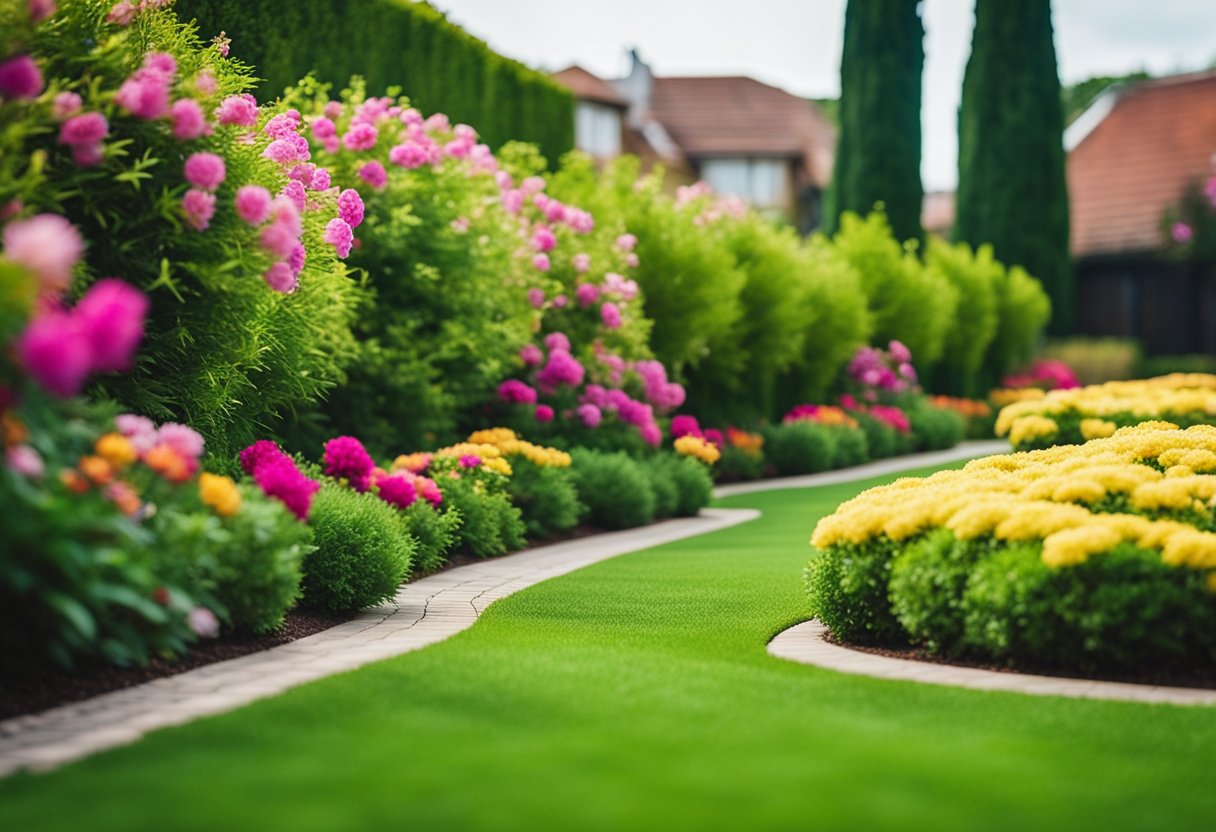
When it comes to selling your home, first impressions matter. The exterior of your home is the first thing potential buyers will see, and it can make or break a deal. That’s why enhancing your home’s curb appeal is so important. Here are some tips and tricks to help you enhance your curb appeal and make your home more attractive to potential buyers.
Landscaping
Landscaping is one of the easiest and most effective ways to enhance your home’s curb appeal. A well-maintained lawn, trimmed hedges, and colorful flowers can make a big difference. Here are some tips for landscaping:
- Keep your lawn mowed and edged
- Trim hedges and bushes
- Add colorful flowers and plants
- Add mulch to flower beds
- Remove weeds and dead plants
Lighting
Outdoor lighting can also enhance your home’s curb appeal. It not only adds a decorative touch but also provides safety and security. Here are some tips for outdoor lighting:
- Install path lighting to guide visitors to your front door
- Add accent lighting to highlight the architectural features of your home
- Install motion-sensor lights for added security
Front Door
Your front door is the focal point of your home’s exterior. It’s the first thing potential buyers will see up close, so make sure it’s in good condition. Here are some tips for your front door:
- Paint or replace your front door if it’s worn or outdated
- Add a wreath or other decorative element to your front door
- Install new hardware, such as a doorknob or knocker
- Keep the area around your front door clean and clutter-free
Other Tips
Here are some other tips to enhance your home’s curb appeal:
- Power wash your home’s exterior to remove dirt and grime
- Repair any cracks or damage to your driveway or walkway
- Add a mailbox or house numbers that complement your home’s style
- Keep your trash cans and recycling bins out of sight
By following these tips and enhancing your home’s curb appeal, you can make a great first impression on potential buyers and increase your chances of making a sale.
Luxury Specialist at McGraw Realtors
With a diverse background, including a career as an Air Force fighter pilot and entrepreneurship, Bill transitioned to real estate in 1995. Co-founding Paradigm Realty with his wife, Charlene, he quickly rose to prominence in Oklahoma City’s luxury real estate scene. Now, as one of the top agents with annual sales surpassing $20 million, Bill’s dedication to exceptional service remains unparalleled. With a legacy spanning over two decades in the industry, Bill’s expertise and commitment make him a trusted name in luxury real estate.